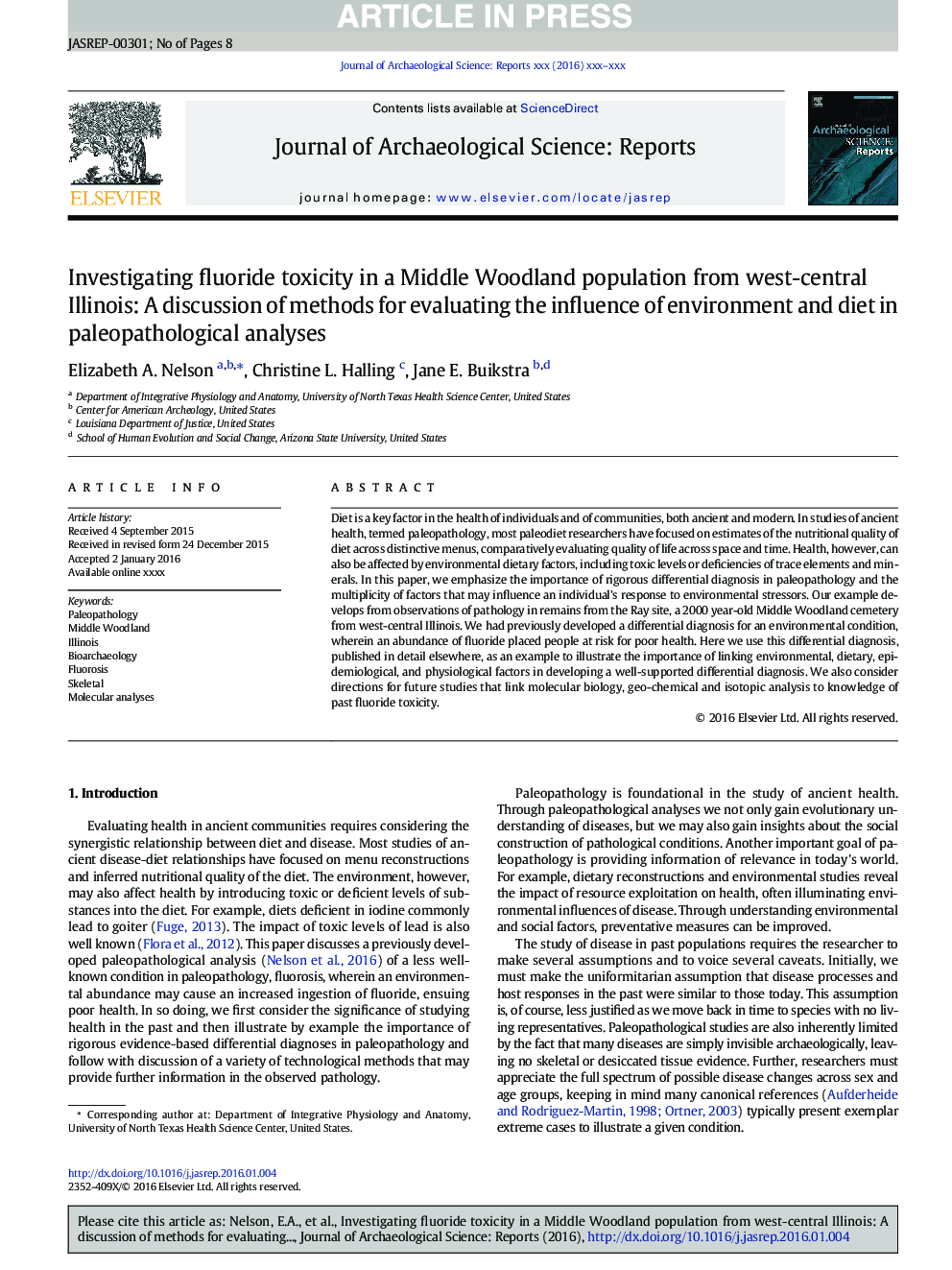| Article ID | Journal | Published Year | Pages | File Type |
|---|---|---|---|---|
| 7445666 | Journal of Archaeological Science: Reports | 2016 | 8 Pages |
Abstract
Diet is a key factor in the health of individuals and of communities, both ancient and modern. In studies of ancient health, termed paleopathology, most paleodiet researchers have focused on estimates of the nutritional quality of diet across distinctive menus, comparatively evaluating quality of life across space and time. Health, however, can also be affected by environmental dietary factors, including toxic levels or deficiencies of trace elements and minerals. In this paper, we emphasize the importance of rigorous differential diagnosis in paleopathology and the multiplicity of factors that may influence an individual's response to environmental stressors. Our example develops from observations of pathology in remains from the Ray site, a 2000Â year-old Middle Woodland cemetery from west-central Illinois. We had previously developed a differential diagnosis for an environmental condition, wherein an abundance of fluoride placed people at risk for poor health. Here we use this differential diagnosis, published in detail elsewhere, as an example to illustrate the importance of linking environmental, dietary, epidemiological, and physiological factors in developing a well-supported differential diagnosis. We also consider directions for future studies that link molecular biology, geo-chemical and isotopic analysis to knowledge of past fluoride toxicity.
Related Topics
Social Sciences and Humanities
Arts and Humanities
History
Authors
Elizabeth A. Nelson, Christine L. Halling, Jane E. Buikstra,
